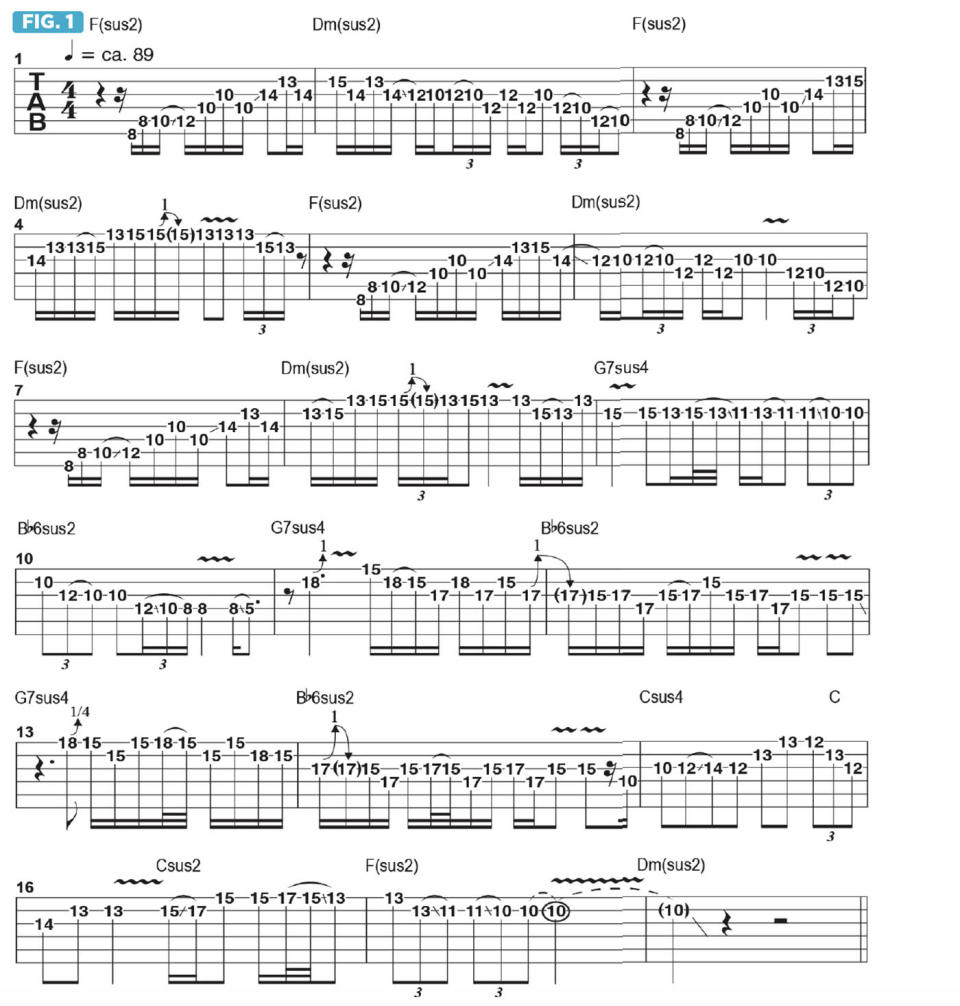How to create melodies that connect relative major and minor chords

Over the last two columns, we looked at various ways to craft melodic solos over alternating relative major and minor chords. As a basis for study, I used the 16-bar chord progression from my original song Twilights, which includes two different sets of relative major and minor chords. This time, I’d like to offer some additional examples of approaches to melodic soloing over this progression.
The Twilights progression begins with an alternating two-bar pattern of F(sus2) to Dm(sus2), played four times. The progression then modulates to a different key while switching the order of the relative major and minor chords; in bars 9-14, the relative minor chord comes first – Gm – followed by its relative major, Bb.
A richer harmonic accompaniment is achieved by replacing the basic chords with G7sus4 and Bb6sus2, respectively. The chords in the last two bars of the progression are Csus4 - C - Csus2.
Figure 1 presents an improvised solo over the 16-bar form: In bars 1-8, over F(sus2) - Dm(sus2), the lines are based on alternating bars on F major pentatonic (F, G, A, C, D) and D minor pentatonic (D, F, G, A, C). Notice that both scales are made up of the same five notes.
My approach for these first eight bars is to present two-bar melodic phrases that accentuate the triadic chord tones of each chord; over F, they are F, A and C; over Dm, the triadic chord tones are D, F and A.

More importantly, the goal is to craft melodies that are memorable and display motivic development and musicality. The method used is to begin each phrase similarly but to “resolve” the phrases in different ways.
Another important element in the soloing approach is to stick with the same scale position through the eight bars, as each line begins in 8th position, moves up to 10th and 13th positions then back down to 10th.
In bars 9-14, over G7sus4 - Bb6sus2, the lines switch to G minor pentatonic (G, Bb, C, D, F) and Bb major pentatonic (Bb, C, D, F, G); once again, the two scales consist of the same notes, and here I’m alternately targeting the triadic chord tones of Gm (G, Bb, D) and Bb (Bb, D, F). Likewise, I begin the lines by pivoting between specific fretboard positions, starting in 15th position over G7sus4 and ending in 8th position over Bb6sus2.
In bars 11-14, all of the phrases remain in 15th position while the relevant chord tones are targeted as the changes occur. In the last two bars, played over Csus4 - C - Csus2, I target the chord tones of C (C, E, G) and reference F, the 4th of C, to melodically acknowledge Csus4 (C, F, G).

Figure 2 illustrates the opening chordal pattern played for F(sus2) - Dm(sus2). Notice the use of hammer-ons and pull-offs as ornaments, or “extensions,” and how each chord is arpeggiated.

